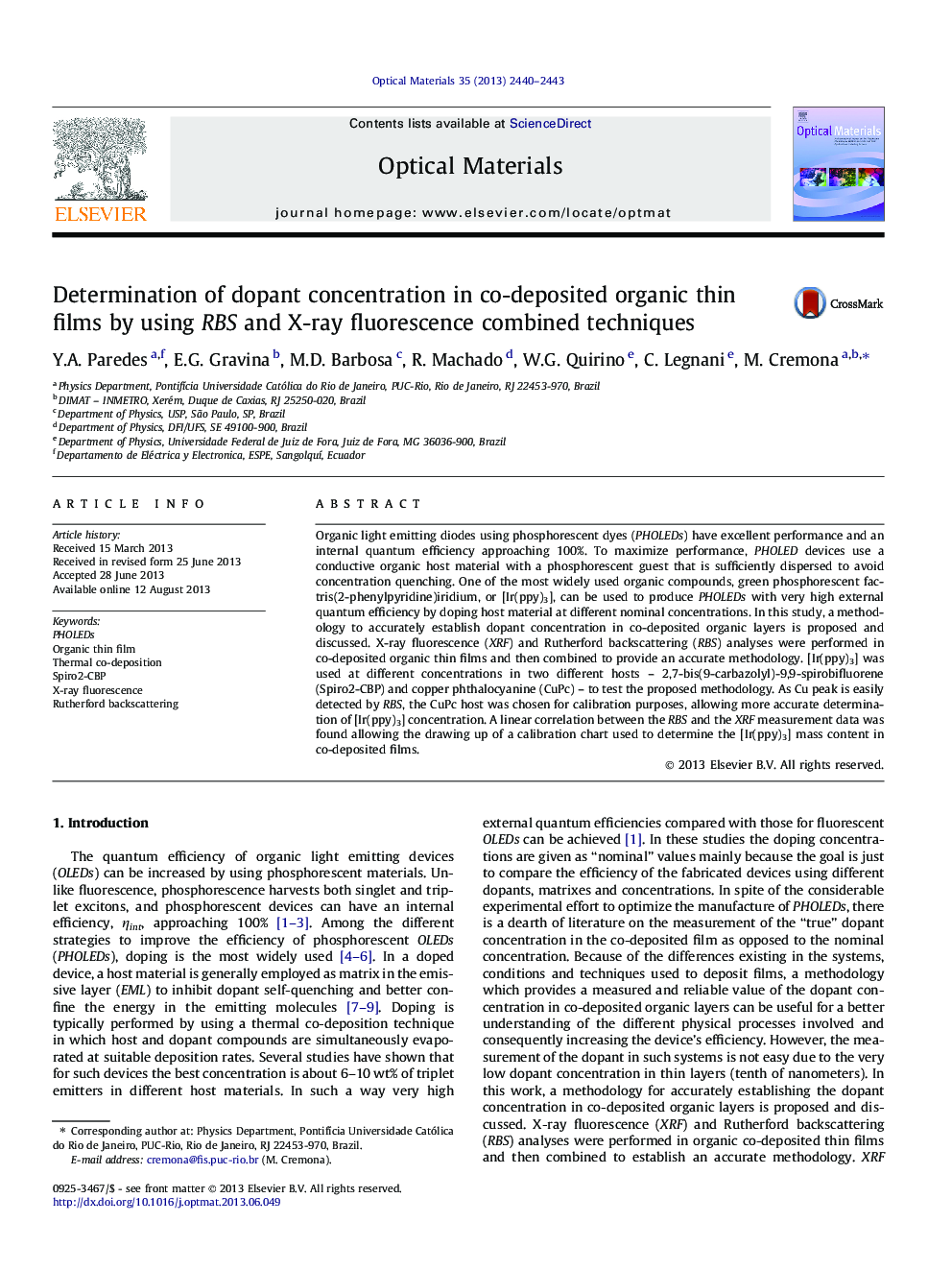| Article ID | Journal | Published Year | Pages | File Type |
|---|---|---|---|---|
| 1494933 | Optical Materials | 2013 | 4 Pages |
Abstract
Organic light emitting diodes using phosphorescent dyes (PHOLEDs) have excellent performance and an internal quantum efficiency approaching 100%. To maximize performance, PHOLED devices use a conductive organic host material with a phosphorescent guest that is sufficiently dispersed to avoid concentration quenching. One of the most widely used organic compounds, green phosphorescent fac-tris(2-phenylpyridine)iridium, or [Ir(ppy)3], can be used to produce PHOLEDs with very high external quantum efficiency by doping host material at different nominal concentrations. In this study, a methodology to accurately establish dopant concentration in co-deposited organic layers is proposed and discussed. X-ray fluorescence (XRF) and Rutherford backscattering (RBS) analyses were performed in co-deposited organic thin films and then combined to provide an accurate methodology. [Ir(ppy)3] was used at different concentrations in two different hosts - 2,7-bis(9-carbazolyl)-9,9-spirobifluorene (Spiro2-CBP) and copper phthalocyanine (CuPc) - to test the proposed methodology. As Cu peak is easily detected by RBS, the CuPc host was chosen for calibration purposes, allowing more accurate determination of [Ir(ppy)3] concentration. A linear correlation between the RBS and the XRF measurement data was found allowing the drawing up of a calibration chart used to determine the [Ir(ppy)3] mass content in co-deposited films.
Related Topics
Physical Sciences and Engineering
Materials Science
Ceramics and Composites
Authors
Y.A. Paredes, E.G. Gravina, M.D. Barbosa, R. Machado, W.G. Quirino, C. Legnani, M. Cremona,
